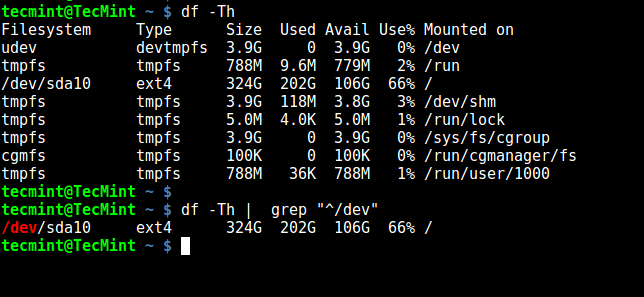Linux Size Of Directory
List Files and Directories by Size on Linux. Lowell Heddings @lowellheddings Updated July 16, 2013, 8:29pm EDT. This page will show us how to create a list of files and folders ordered by size using standard Linux commands. To get a list with the size of each item in a folder. When listing the contents of a directory using the ls command, you may have noticed that the size of the directories is almost always 4096 bytes (4 KB). That’s the size of space on the disk that is used to store the meta information for the directory, not what it contains.
I recently had to delete and recreate an NFS directory to shrink its size after it had previously bloated. In the process, I found a fairly efficient way to do this using rsync and hard links. This method avoids copying the actual files, while still accomplishing the goal of recreating the directory with the same contents.Since we needed to take downtime to do this operation during our maintenance window, making the rebuilt directory available as soon as possible was important for us. If simplicity is more important to you, change the first move command to an 'rm -rf' on the source directory, and skip the other 'rm -rf' command.I extracted these commands from a larger process, and abstracted the directory names, so apologies if I've made a mistake in that translation. Mkdir /tmp/holdingdir/rsync -ai -delete -link-dest=/path/to/sourcedir/ /path/to/sourcedir/ /tmp/holdingdir/mv /path/to/sourcedir/ /tmp/deleteme/mv /tmp/holdingdir/ /path/to/sourcedir/Then later, we remove the directory.
Depending on size, you may need to use a more sophisticated technique to do this. For example, using rsync with the -delete flag to sync an empty directory into this directory may be more efficient. Rm -rf /tmp/deleteme/.
Use ls command for files and du command for directories.Checking File Sizes ls -l filename /. Size of the file./ls -l. /.
Size of All the files in the current directory./ls -al. /. Size of All the files including hidden files in the current directory./ls -al dir/ /. Size of All the files including hidden files in the 'dir' directory./ls command will not list the actual size of directories. Therefore, we use du for this purpose.Checking Directory sizes du -sh directoryname /.
Gives you the summarized(-s) size of the directory in human readable(-h) format./du -bsh. /. Gives you the apparent(-b) summarized(-s) size of all the files and directories in the current directory in human readable(-h) format./Including -h option in any of the above commands (for Ex: ls -lh.

or du -sh) will give you size in human readable format ( kb, mb, gb.)For more information see man ls and man du. There is also a great ncdu utility - it can show directory size with detailed info about subfolders and files. InstallationUbuntu: $ sudo apt-get install ncduUsageJust type ncdu path in the command line. After a few seconds for analyzing the path, you will see something like this: $ ncdu 1.11 Use the arrow keys to navigate, press? For help- / -. 96,1 GiB ########## /home. 17,7 GiB # /usr.
Linux Size Of Directory One Level

4,5 GiB /var1,1 GiB /lib732,1 MiB /opt. 275,6 MiB /boot198,0 MiB /storage.
153,5 MiB /run. 16,6 MiB /etc13,5 MiB /bin11,3 MiB /sbin. 8,8 MiB /tmp.
2,2 MiB /dev! 16,0 KiB /lost+found8,0 KiB /media8,0 KiB /snap4,0 KiB /lib64e 4,0 KiB /srv! 4,0 KiB /roote 4,0 KiB /mnte 4,0 KiB /cdrom. 0,0 B /proc. 0,0 B /sys@ 0,0 B initrd.img.old@ 0,0 B initrd.img@ 0,0 B vmlinuz.old@ 0,0 B vmlinuzDelete the currently highlighted element with d, exit with CTRL + c. You have to differenciate between file size and disk usage.
The main difference between the two comes from the fact that files are 'cut into pieces' and stored in blocks.Modern block size is 4KiB, so files will use disk space multiple of 4KiB, regardless of how small they are.If you use the command stat you can see both figures side by side. Stat file.cIf you want a more compact view for a directory, you can use ls -ls, which will give you usage in 1KiB units. I'm a Ubuntu 16.04 user myself and I find that the ll command is by far the easiest way to see a directory's contents.